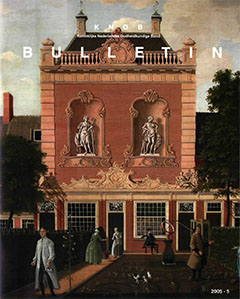Indexering ESCI / Scopus


Toelichting op het themanummer (Freek Schmidt). Freek Schmidt: Het architectenloze tijdperk. Ambachtslieden en amateurs in de achttiende eeuw. Geert Medema: 'Het is een stadswerk, daar word niet nagesien'. Aspecten van bouwbeleid en -praktijk van Hollandse steden gedurende de achttiende eeuw. Eva Röell: 'Altoos met ijver geteekent en bewaart'. Architectuurtekeningen van Matthias Soiron (1748-1834) als historische bron.
In Dutch history of architecture the first half of the eighteenth century is sometimes defined as the 'era without architects'. Prominent architects and building contractors from the second half of the seventeenth century lacked worthy successors, large commissions were not forthcoming and even the wealthiest private individuals put up with 'carpenter's designs'.
Work bosses, the heads of large building companies who worked with fixed workshops of craftsmen and artists, dominated the building production and acted as designers together with painters and sculptors. Apart from them,...
In general, the eighteenth century in Holland is regarded as a period of decline after the great prosperity and affluence of the preceding century. The number of public works in towns in Holland decreased and the urban building companies concentrated on maintenance of existing structures. In the course of this century many towns were faced with increasing financial deficits.
The direct connection between public funds and public works, which made up twenty to thirty per cent of the total expenditure, made interventions in the building companies necessary. The high cost and often...
Two years before his death the Maastricht master joiner and -mason Matthias Soiron collected all the draft drawings he had made during his life and had them bound in 26 albums. Two-thirds of them have been preserved. This source provides an insight into the work of Soiron and the drawing practice in general, but also in our possibilities to understand architecture drawings.
To what extent was the production of drawings of Soiron unique or, on the contrary, typical? What conclusions can and may be drawn from them about the eighteenth-century architecture- and drawing practice in...


open access mogelijk gemaakt door Stichting OpenAccess
